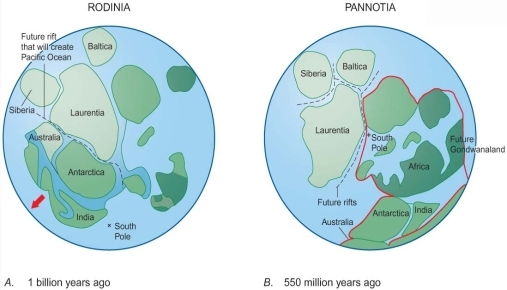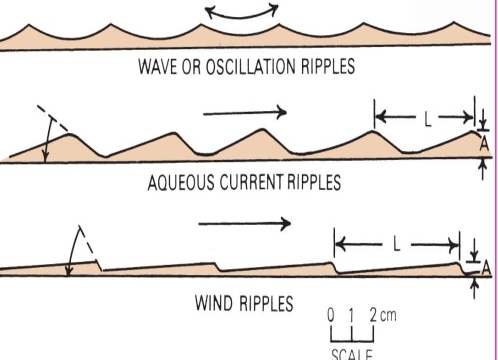Online Quiz
Earliest Paleozoic History
Vendian History
1Ga, a supercontinent “Rodinia”
– formed at the end of the Grenville orogeny
550MY, a supercontinent “Pannotia”
– as a result of collisions & dismemberment of Proterozoic supercontinent
these events was indicated by:
1. The Vendian basaltic rocks around the margins of the continent
2. Fault-bounded troughs containing very thick Vendian strata within margins of craton


Basalt suggest rifting of N-America away from other continent by sea-floor spreading

breakup of the supercontinents
Sea must have surrounded the continent at first & gradually spread over craton during Late Cambrian & Early Ordovician
Transgression caused by a rise of sea level due to breakup of the supercontinents
The breakup represents fundamental global reorganizations of plate configurations, that’s why we know N-America as it is now
structural modification of Cratons
The broad & gentle warpings of craton
– caused by small changes of isostatic equilibrium due to density changes in the underlying lithosphere
– have caused formation of:
1. Arches (Raised areas) with thin & less complete sequences of strata interrupted by unconformities
2. Basins (depressed areas) with thicker & more complete sequences, subsided rapidly & received greater & more continuous sedimentary accumulations than Arches
3. faults that may form aulacogens within the outer portion of cratons
Arches Vs Basins
Basins & Arches have greatly influenced the accumulation of oil, gas, salt, gypsum, pure limestone, & other economically important resources associated with sedimentary rock
Cratonic Basins & Arches are 2 types according to the warping time:
1. Warping during sedimentation caused:
– Thickening strata in basins
– Thinning strata in arches
2. Warping after sedimentation caused thickness patterns superficially
Warping favored accumulation of petroleum, which migrated up-dip from the basin where it was generated
contrast between basins & arches is due only to differential erosion after warping, this warping was too late to trap petroleum

How do we acquire the information for studying broad and & cratonic structures?
As we know much of the evidence for arches lies in the surface outcrops, but only the edges of the basins are exposed, so subsurface information is required to define basins & buried arches
our informational sources was from: Deep drilling for water & petroleum
Deep drilling for H₂O & petroleum provided 3D to our observations geophysical devices; such as magnetic & gravity surveys which revel information about special types & thicknesses of buried rocks
seismology provides the greatest insight into thickness, structure, & in some cases the lithology of buried strata
General features of the earliest Paleozoic sediments
1. The sandstone facies
2. The carbonate facies
The sandstone facies
1. Quartz-rich sand: dominant Cambrian sediment on the craton with glauconite- bearing fine sand, shale was minor
– Carbonate sediments replaced all of these during Ordovician times
2. Cambrian cratonic sandstones rank among the most mature in the world
– gains: well rounded, sorted, & consists 99% quartz with traces of other stable mineral
3. Ripple marks is a strike feature for the Cambrian sandstone, from ripples feature the origin of the current can be deduced
The carbonate facies
By the beginning of Ordovician time, so little land remained exposed that deposition of terrigenous clastic material nearly ceased
Clastic limestone was the main sedimentary deposits, these carbonate show ripple marks, oolites & trace fossils (burrowing action)
All the above features of carbonate indicate the shallow water or tidal origin



Early Paleozoic Paleoclimate
Climate evidence from organic reefs, land plants, coal, soil, & O₂ isotope data aren’t available in early Paleozoic strata
the abundance of oolite, some very shelly limestone, & local evaporite deposits do tend to support a warm climate
Presence of wind deposits & scattered evaporites →think of arid deserts
